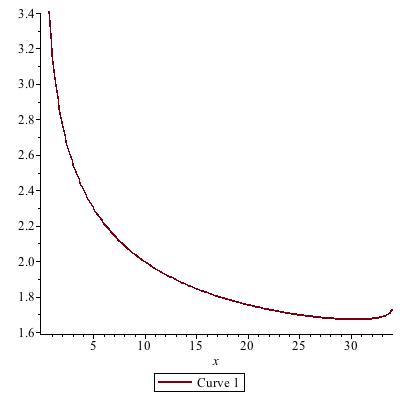Some information on Pietro's ODE: $$ (4x^3-136x^2+4x)u''+(8x^2-204x+4)u'+(x-10)u=0 \tag{1}$$ I will use this notation: $$ c := (1+\sqrt{2}\;)^4 = 17+12\sqrt{2} \approx 33.97056 , \\ c_o := \frac{1}{c} = 34-c = 17-12\sqrt{2} \approx 0.02944 , \\ a := 1-c^2 = -576-408\sqrt{2} \approx -1159.9991 , \\ q := -\frac{11317}{4}-234\sqrt{2} \approx -660.176 , \\ \alpha := \frac{3}{2}, \beta := \frac{3}{2}, \gamma := \frac{3}{2}, \delta := 1, \epsilon := \frac{3}{2} . $$ Maple converts $(1)$ to a Heun differential equation, and evaluates it in terms of the Heun functions. See DLMF for information on that. I will follow their notation. In interval $(c_o,c)$, two linearly independent solutions of $(1)$ are $$ u_1(x) := (x-c_o)^{1/2}(c-x)^{1/2} Hl\big(a,q;\alpha,\beta,\gamma,\delta;1-cx\big) \\ = \sqrt {-{x}^{2}+34\,x-1}\;{\it Hl} \left( -408\,\sqrt {2}-576,-234\, \sqrt {2}-{\frac {1317}{4}};\frac{3}{2},\frac{3}{2},\frac{3}{2},1,-17\;x-12\,x\sqrt {2}+1 \right) \\ u_2(x) := (c-x)^{1/2} Hl\big(a,(a\delta+\epsilon)(1-\gamma)+q;\alpha+1-\gamma,\beta+1-\gamma,2-\gamma,\delta;1-cx\big) \\ = \sqrt {-x+17+12\,\sqrt {2}}\; {\it Hl} \left( -408\,\sqrt {2}-576,-42-30\,\sqrt {2},1,1,\frac{1}{2},1,-17 \,x-12\,x\sqrt {2}+1 \right) $$ The endpoints $x=c_o$ and $x=c$ correspond to $1-cx$ at the Heun singularities $0$ and $a$, respectively.
Here is a graph of $u_1(x)$

At the left end, $x=c_o$, it goes to zero, but has a vertical tangent (like a square-root)

At the right end, $x=c$, it goes to a finite limit, but has a vertical tangent

The wiggles are not real, but show Maple's difficulty in evaluating close to the singularity.
Here is a graph of $u_2(x)$

At the left end $x=c_o$ it approaches a definite value $2^{7/4}3^{1/2}$ with a non-vertical tangent

and at the right end $x=c$ it approaches a definite value with vertical tangent

For some linear combinations of $u_1$ and $u_2$ the square-root term cancels and it approaches a definite limit at $x=c$ with non-zero tangent. But for those, the approach at $x=c_o$ has vertical tangent.
